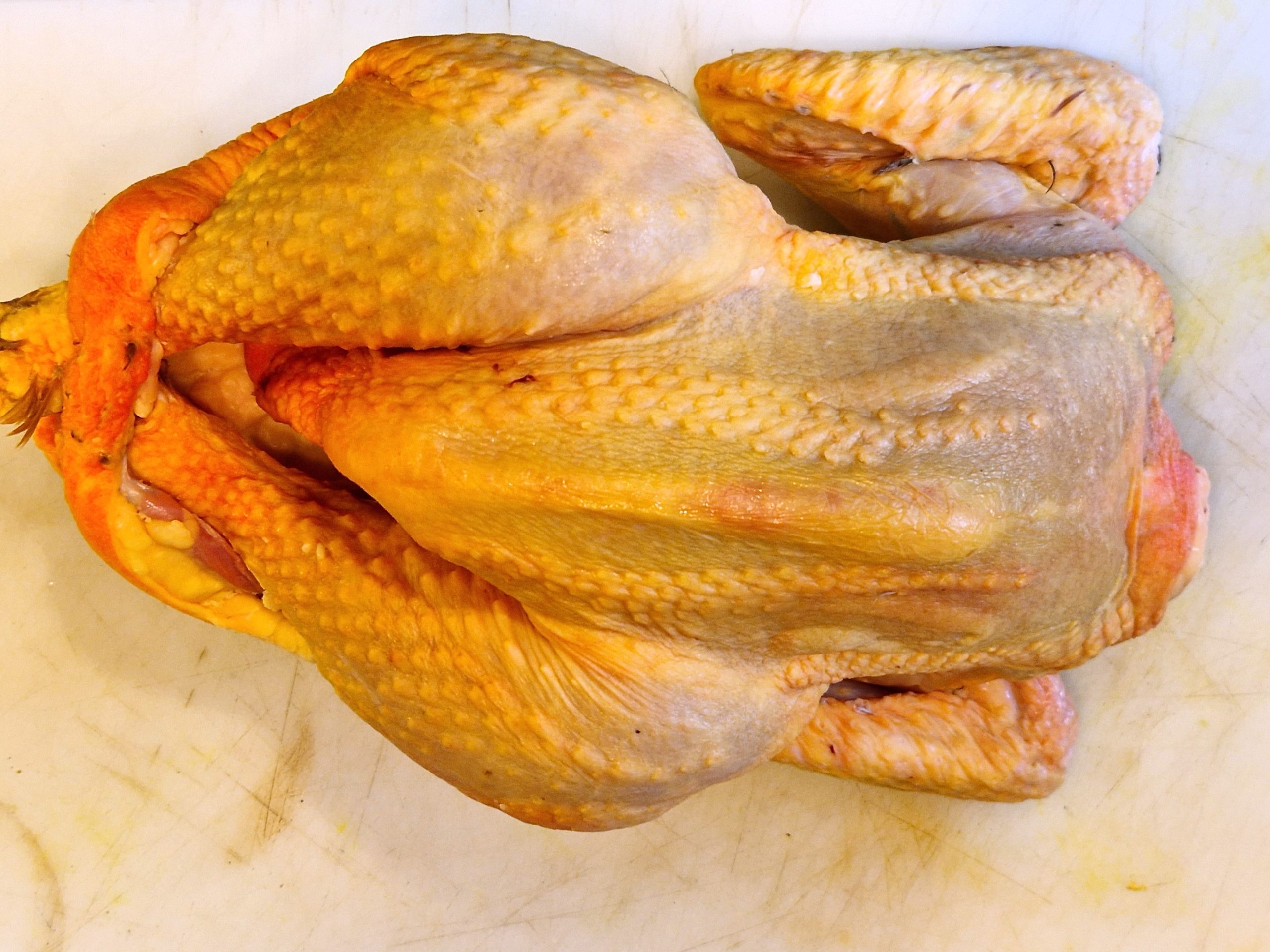
One of the difficulties of translating French recipes for the American kitchen is that many of the ingredients are just not the same in France as in America. This difference in ingredients can often mean that getting good results using a French recipe can require a lot of modifications in measurements, timing and techniques.
Take, for example, one of the most basic ingredients, the chicken. In America, when you think of chicken, you think of a round bird with very little fat, breast meat that represents a significant portion of the overall weight, mild tasting meat in the legs and a skin that is wet and white. This sort of bird has very little to do with a good French farm chicken. Sure it is the same animal, but through breeding, diet and farm practices, American chickens have diverged from their European cousins in ways that are significant enough that they just can’t be cooked the same way. In my experience, this US/France difference applies also to American farm -raised chickens that are more similar to US intensively raised chickens then to French chickens.
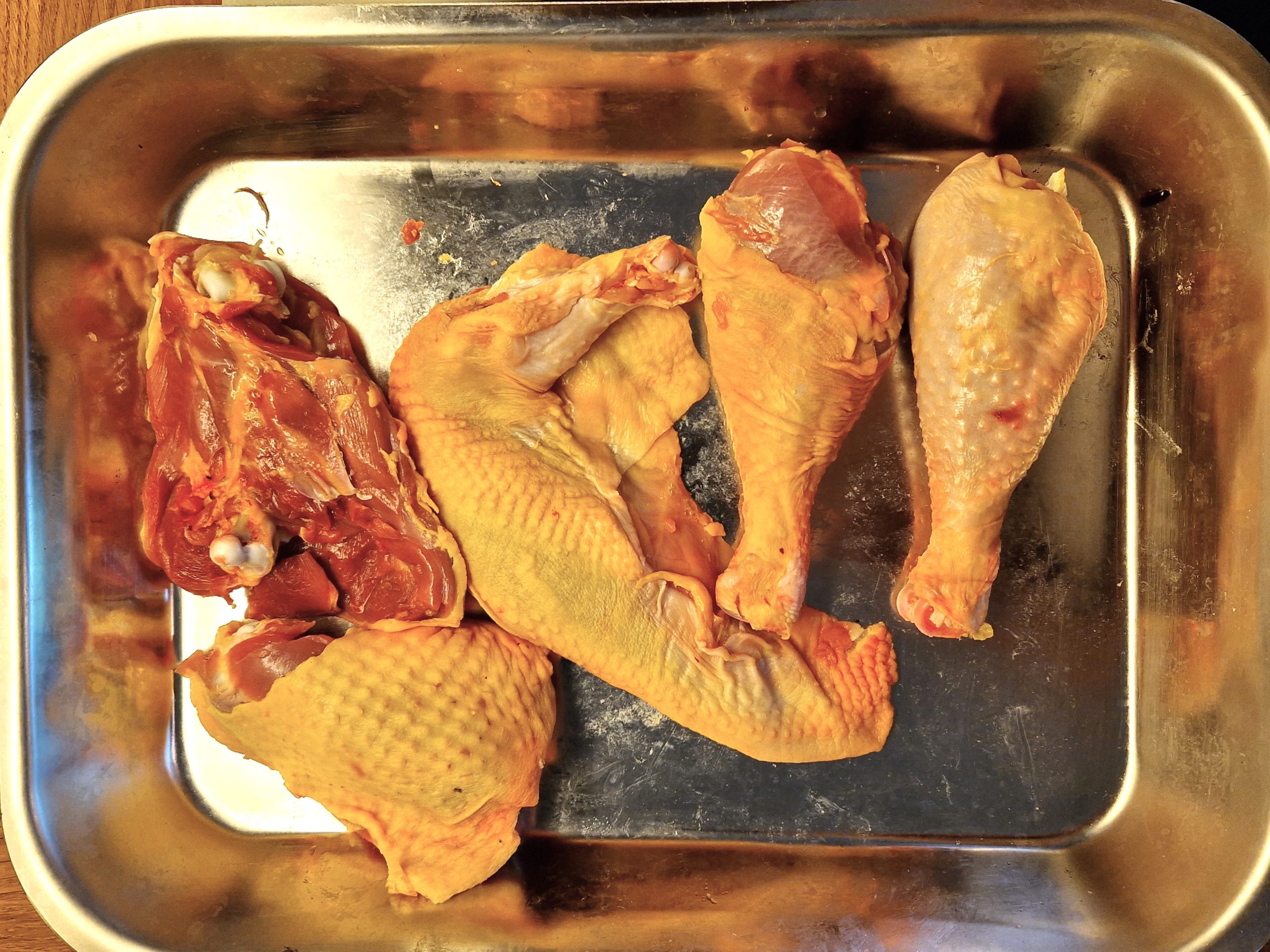
Take a look at the photo a organically raised, free range French farm chicken above. First thing you notice is that the breast is much smaller and the legs are bigger than an American bird. Americans love breast meat, so American chickens have been bred to maximize it. The leg meat is also very dark compared to an American chicken, almost like duck or turkey legs. Bigger breast and smaller legs in an American chicken means that roasting time is mostly tied to making sure that the breast is cooked through, whereas with a French chicken, the main concern is that the legs cook slowly and thoroughly so that they will have time to become tender.
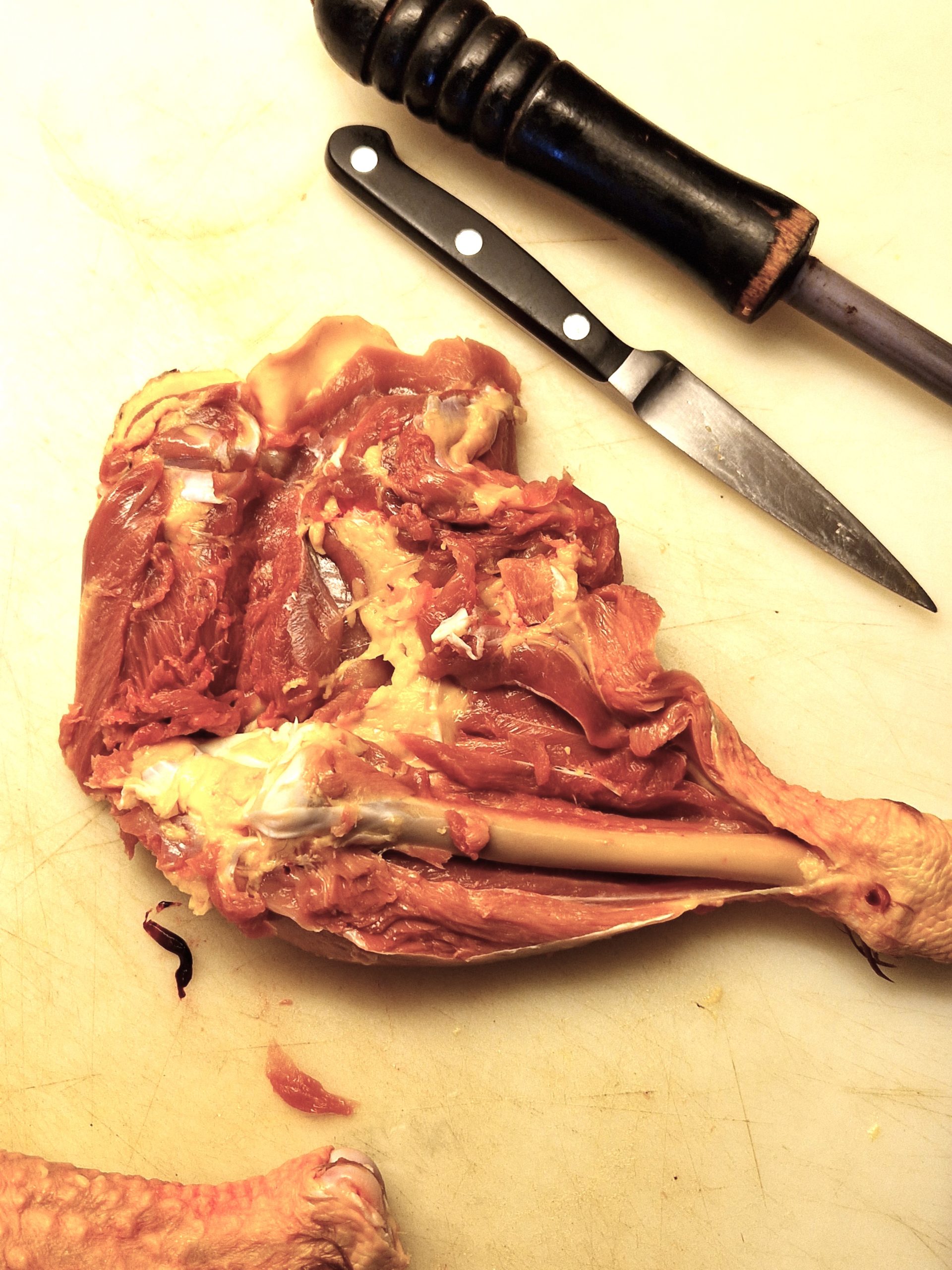
Next, you notice that the skin is not white and wet like an American chicken, but yellow, dry and almost tacky. The first is the result of diet, which for a French farm bird consists of insects and the parings from the kitchen, supplemented by grain, in the SW of France, that means mostly corn. This diet also yields a significant amount of yellow fat both under the skin and in the cavity and a significant yellow pigmentation in to the skin. In the past, I have read recipes (especially in traditional Jewish cookbooks) that make reference to using the rendered fat from a chicken. This always struck me as strange, as the typical American chicken has so little fat, that rendering is not possible. However, with French farm chickens, this made a lot more sense; one good sized chicken can yield more than a cup of rendered fat, which is as prized in cooking as duck fat. (PS to render chicken fat, toss all the fatty scraps into a sauce pan with enough water to cover. Bring to a boil, then continue cooking until all the water has boiled away and the remaining bits begin to brown. Strain and cool, store covered in the fridge, use like you would duck fat).
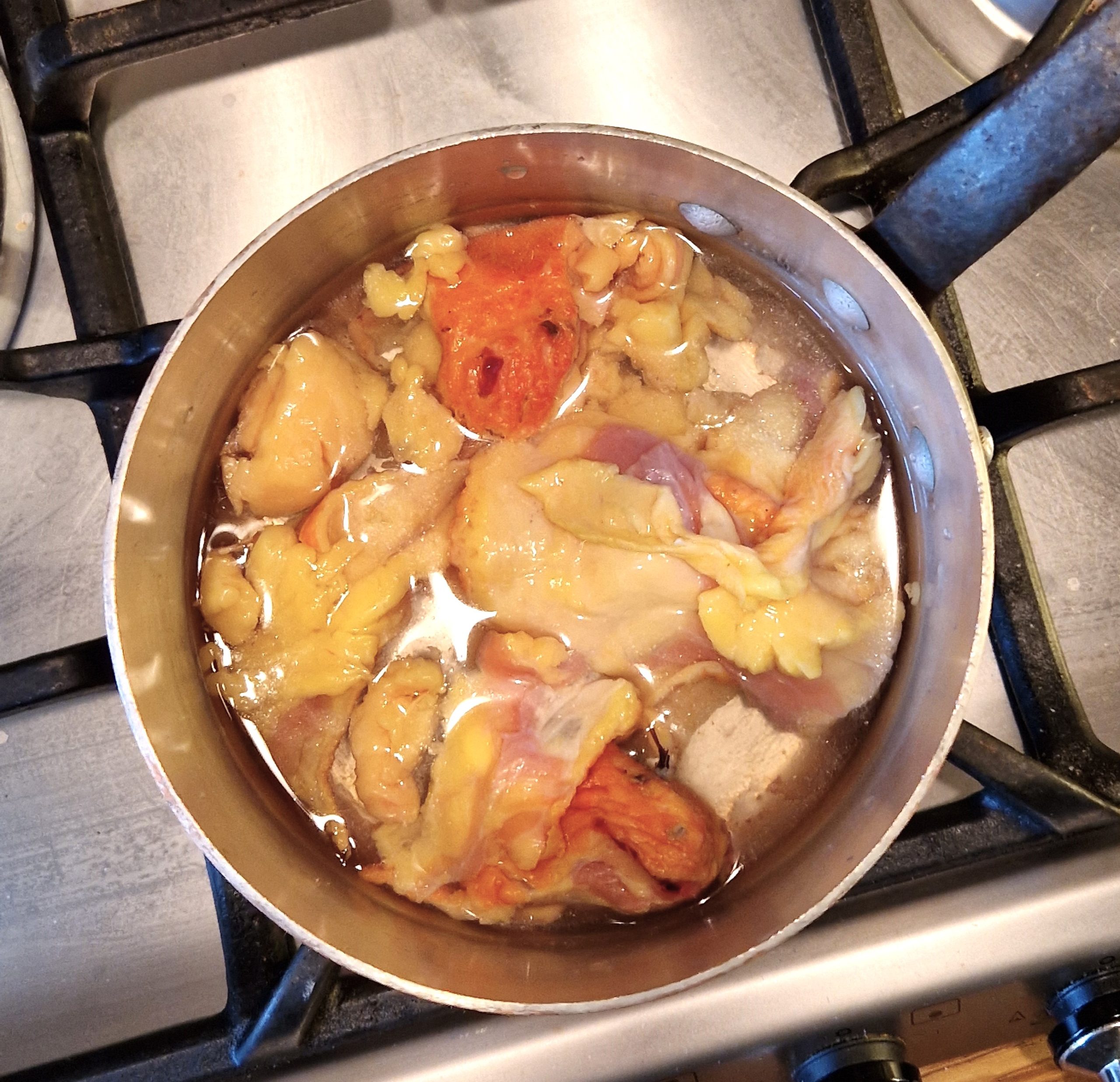
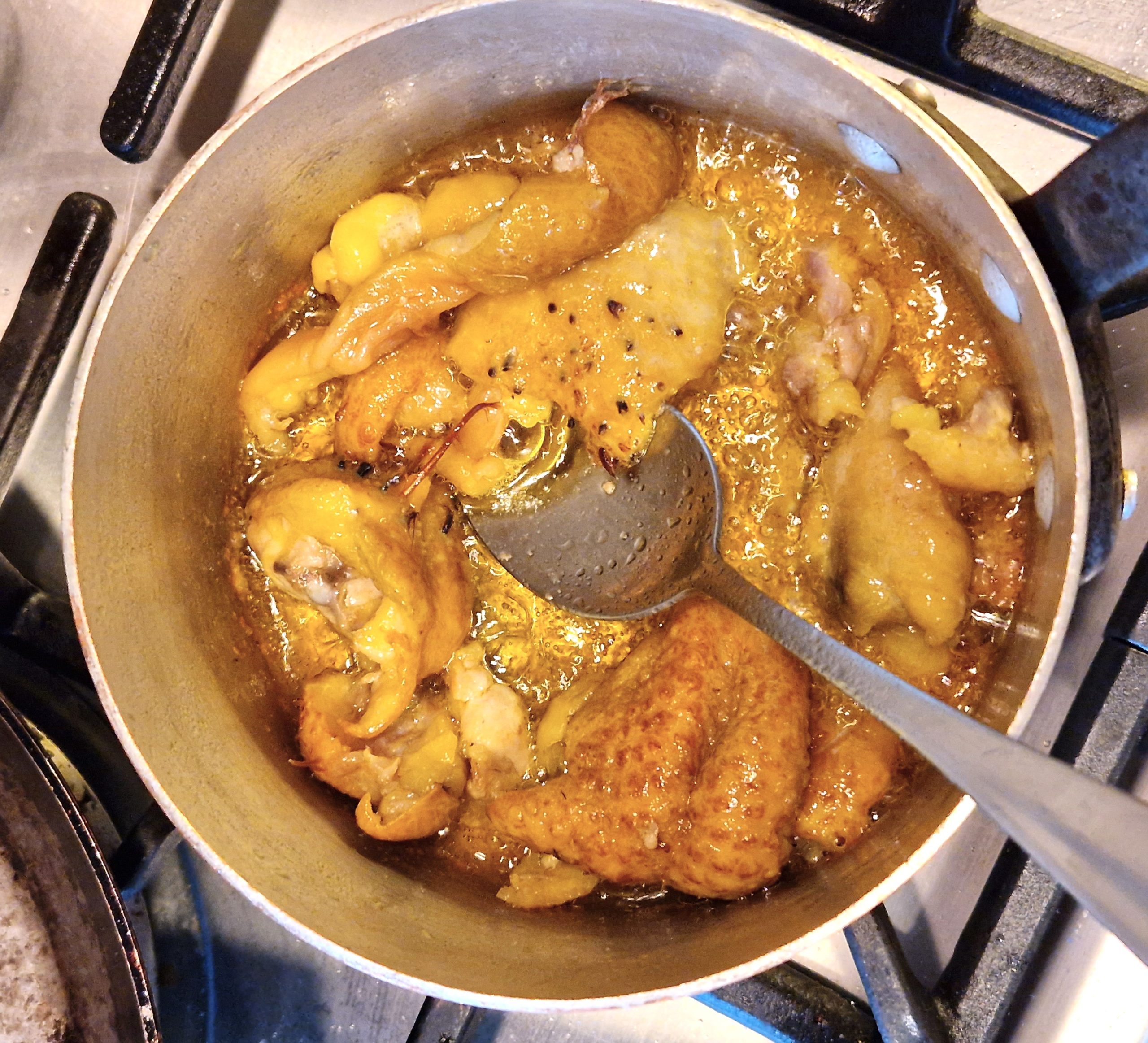
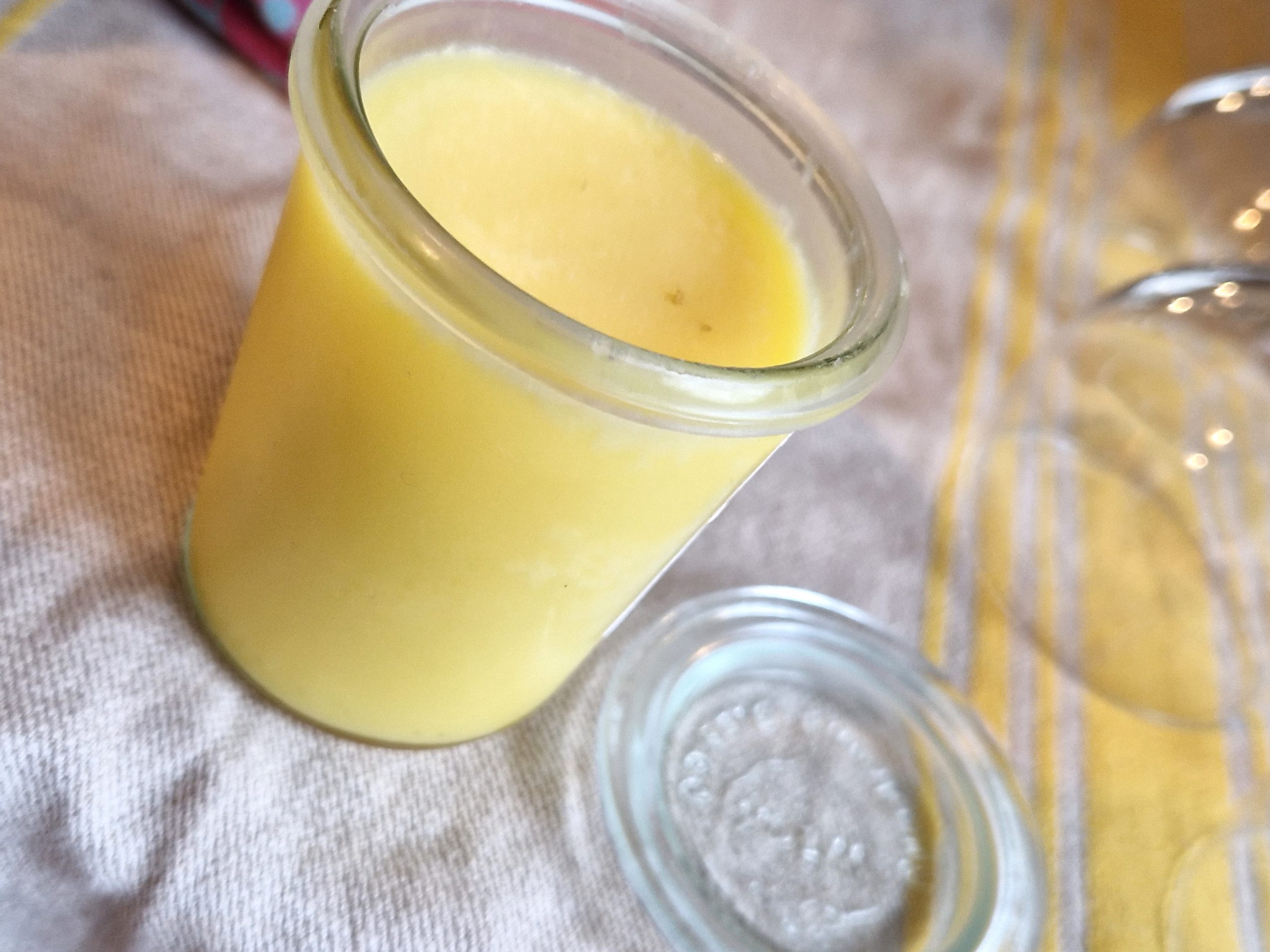
I guess the main difference between a French chicken and chickens in America is the flavor, which is much more “chicken-y” and meaty, not like game exactly but going in that direction. We Americans have a tendency to describe any mild white meat as tasting “like chicken” which I think says more about chicken than about other meats…we expect chicken to be pretty neutrally flavored. The stronger flavor and firmer texture of French chickens really shine in traditional recipes, especially those that are braised, simmered or stewed. Its like a whole different animal.
One of the trademark dishes that we served at Le Pichet (and still do!) and Cafe Presse was our whole roasted chicken for two. When I set out to add this to the menu, the main problem that I faced was how to adapt the traditional French way of roasting a chicken to our birds. The French way to roast a chicken is in a medium oven, say 350 degrees, first on one side, then on the other, and finally on the breast, for a total cooking time of about 1.5 hours. After many trials, I discovered that fatter, more tender American chickens are actually better roasted at 500 degrees for a fairly short time, which allowed us to cook your chickens to order in 1 hour (a happy bi-product!). Neither method is better than the other, just more adapted to the local chickens.
So the take-away is: Don’t be surprised if French recipes for chicken dishes need to be adapted for the American kitchen. When making Coq au Vin, simmering an American chicken for hours, as many French recipes recommend, will simply yield dry, sad chicken.
A few days late for us, but I fortunately made the right adjustments and our fermier turned out good. We ate chicken tostadas with the leftovers. Miam!
Sounds tasty!